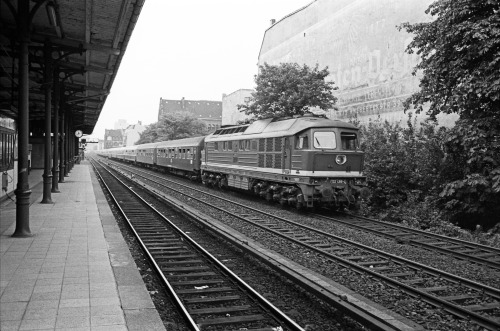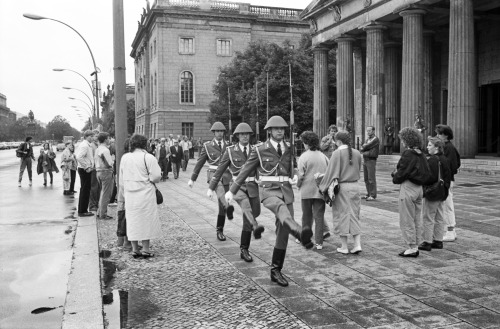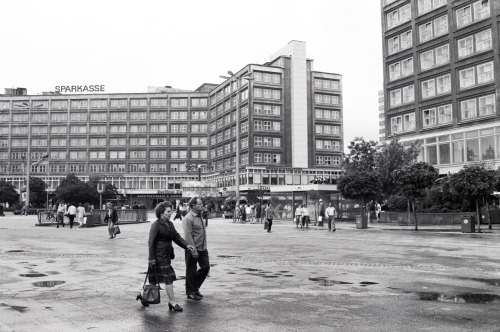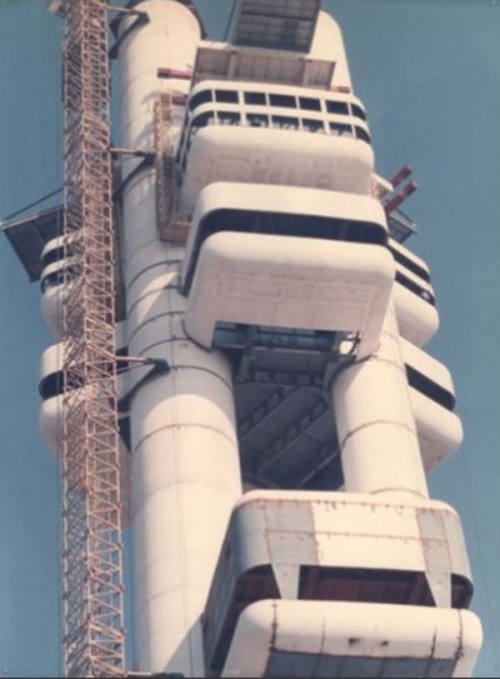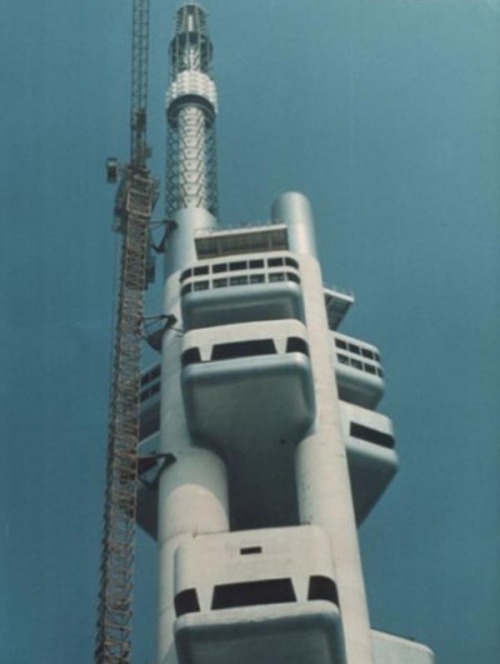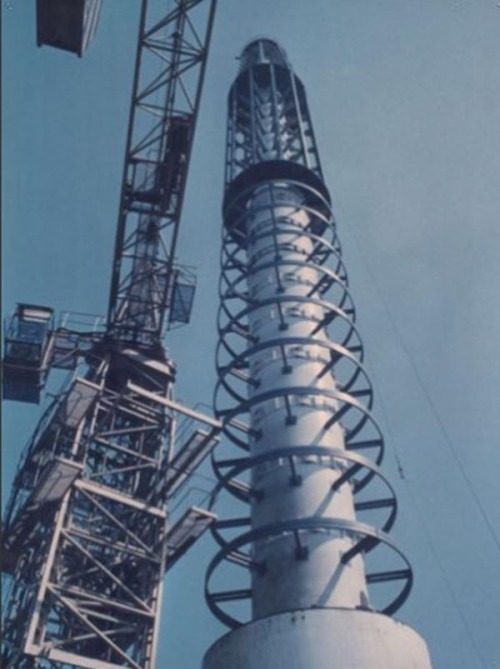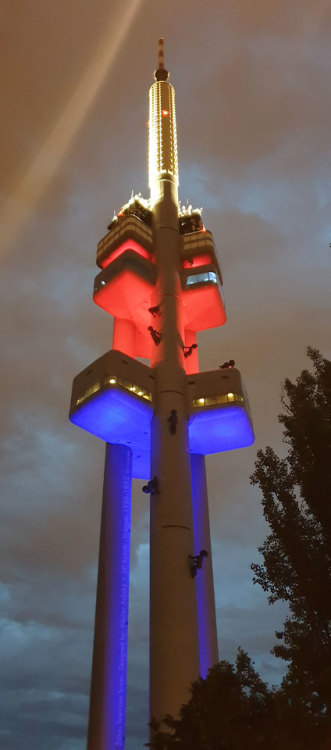#communist-era
East German train running through Savignyplatz S-Bahnhof in 1986. The engine type is a Russian class 132 “Ludmilla” diesel, number 132 466. The livery was normally dark red with cream detailing. The coaches were dark green, with the ‘DR’ logo on them, for ‘Deutsche Reichsbahn’.
Post link
West Berlin Bernauer Strasse 1986. The memorial to Olga Segler, who died at this spot trying to escape to the West.
Post link
East Berlin 1986. The Deutscher Dom under reconstruction. This took a long time, because just as the work was finished, the building caught fire, and a lot of it had to be re-done. I just noticed on this frame, bottom left, the rear light of a Skoda 120L, which was a rear-engined car made in Czechoslovakia.
A previous posting of this frame had the following caption:
Deutscher Dom in Berlin in 1986. The road signs here say Wilhelm-Külz-Straße and Johannes-Dieckmann-Straße, so named during the DDR-time. They have since been returned to their old names, Markgrafenstraße and Taubenstraße.
Post link
A section of ‘Third Phase’ Berlin Wall, made from horizontal slabs of concrete topped by an anti-grapple pipe, surrounding the Lichtenrade district, with a watchtower in the empty fields beyond. Picture taken 1986.
Post link
The Berlin Wall surrounding the southernmost part of West Berlin at Lichtenrade. The street is named Hohenzollernstrasse, and was always a dead end at this point. My 1935 map has the empty area beyond marked as Rieselfelder, which translates as ‘Drainage Fields’. The viewing platform here was built more for the use of US Army observation patrols than tourists.
Post link
Prototype
Žižkov Television Tower. Václav Aulický + Jiří Kozák
One of the most authentic TV towers ever built in Europe is Žižkov Television Tower in Prague. Designed in 1985 by architect Václav Aulický and structural engineer Jiří Kozák, built between 1985-1992, it began transmitting signal since1992 until 2012, year in which they switched to digital TV broadcasting and removed the old analogue broadcast equipment installing a datacenter on its free space.
The Structure
The tower stands 216 metres (709 feet) high, there’s no doubt is the tallest building in the skyline of Žižkov district and in the city of Prague. The structure of the tower is the key of its uniqueness, it is based on a triangle module whose corners rise in steel columns, consisting of three tubes with a double steel wall filled with concrete.
They support nine ‘pods’, organized in triades along three levels, and three decks for transmitting equipment. One of the three pillars extends considerably higher than the others, providing the necessary height for antennas. This particular combination gives its effect as a structure’s rocket and gantry appearance. In its time it was a unique technology, which authors have patented.
There are two elevators to transport passengers at a speed of 4 m/s. and a third one elevator works also as a service lift.
Foundations are 15 m. deep, consists on a circular concrete slab, 1,20m. (4 feet) thick and 30 meters diameter.
The Pods
Three of the pods, positioned directly beneath the decks at the top of the tower, are used for equipment related to the tower’s primary function and are inaccessible to the public. The remaining six pods are open to visitors, providing a panoramic view of Prague and the surrounding area. Altitude of the observatory is 93 m, the entire floor is dedicated to relaxation from where you can see Prague in its fullness. The hotel room altitude is 70 m and the lower one at 63 metres (207 feet) you’ll find a recently refurbished restaurant and café bar with a capacity for 180 people.
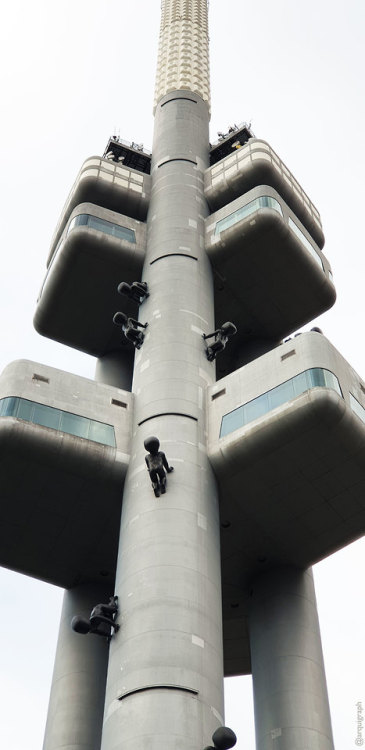
Babie Sculptures
Ten giant sculptures of babies created by leading Czech artist David Černý crawl all over the outside of the tower. According to his concept, the babies of an uncertain future would all have the same DNA and consequently they would all be equall, that’s why the babies are faceless, it sounds unbelievable but who knows.

Žižkov tower model
High-tech in the communist-era
This is an example of high-tech architecture at earlier stages built in communist-era in Central and Eastern Europe, although this tower was critized by its local inhabitants during its construction, since then till now the tower attracts a lot of visitors to enjoy the skyline in a city full of historical buildings.
+ Žižkov tower 35 years in 2020
Images by arquigraph, Městská část Praha 3 & České Radiokomunikace / CRA and wiki arquitectura
Post link

